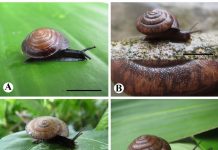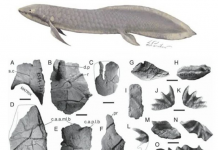Glucose is a simple sugar that is very important for many organisms. It is a carbohydrate (monosaccharide) with the molecular formula C6H12O6. It is found in honey, vegetables, and fruits. It is also the most important free sugar circulating in the blood of higher animals. In addition, it is the primary source of energy in cell function. As mentioned reasons, glucose is used as a measure of the quality of agricultural produce, food industry, beverage industry and health, etc.
There are a number of techniques for detecting glucose, such as electrochemical; optical; thermal and mechanical; and electromagnetic spectroscopy biosensor. However, among these techniques there are several disadvantages, for example, the interference from a co-substrate is the drawback of electrochemical method; longer stabilization times are the drawbacks of optical method and this method is affected by the physical properties of tissue such as density, thickness, and hematocrit; and the drawbacks of electromagnetic spectroscopy are a variety of issues that affect its accuracy and sensitivity, such as a near-field microwave microscope (NFMM), dielectric resonator, single spiral microstrip resonator, and waveguide cavity resonator, while these techniques also measure based on the reflection coefficient. Additional, techniques based on measuring the normalized insertion loss at an optimal frequency and measuring the resonance frequency shift of the transmission coefficient have been reported. Nevertheless, reports on the measurement of glucose coefficient with CT-SRR coupled with a coplanar waveguide (CPW) transmission line have never been reported.
These obstacles and limitations have led researchers – Asst. Prof. Dr Supakorn Harnsoongnoen, Assist. Prof. Dr Urit Charoen-In, and Dr Anuwat Wanthong, the biomimicry for sustainable agriculture, health, environment and energy research unit, Faculty of Science, Mahasarakham University to develop an aqueous glucose concentration monitoring method using a resonant coplanar microwave sensor technique to verify the biosensing concept. As a result of the development of this study, it has been published inconsistently recognized international academic journals (S. Harnsoongnoen et al., 2016, S. Harnsoongnoen et al., 2017, S. Harnsoongnoen et al., 2017, S. Harnsoongnoen et al., 2018)
This study presents the design and characterization of a microwave biosensor based on a circular tapped split ring resonator (CT-SRR) coupled with a coplanar waveguide (CPW) transmission line to determine glucose concentration. An aqueous glucose solution was characterized for a concentration ranging from 0 to 0.20 g/mL with steps of 0.04 g/mL in the frequency range from 1.5 to 2.5 GHz. The notch amplitude transmission coefficient S21 values with a variation in the glucose concentration were detected and recorded. The transmission coefficient spectra, linearity and sensitivity of the sensor were analyzed. The results show that the CT-SRR coupled with a CPW transmission line is a good approach for glucose concentration monitoring.
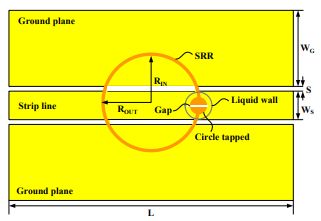
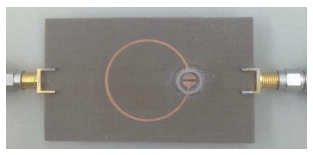
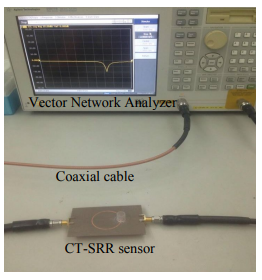
Further research is still needed to continuously enhance the ability to measure glucose concentration with greater accuracy and specificity. However, as a result of this research, it is a good starting point to develop and explore new techniques for the determination of glucose concentration in the future.




